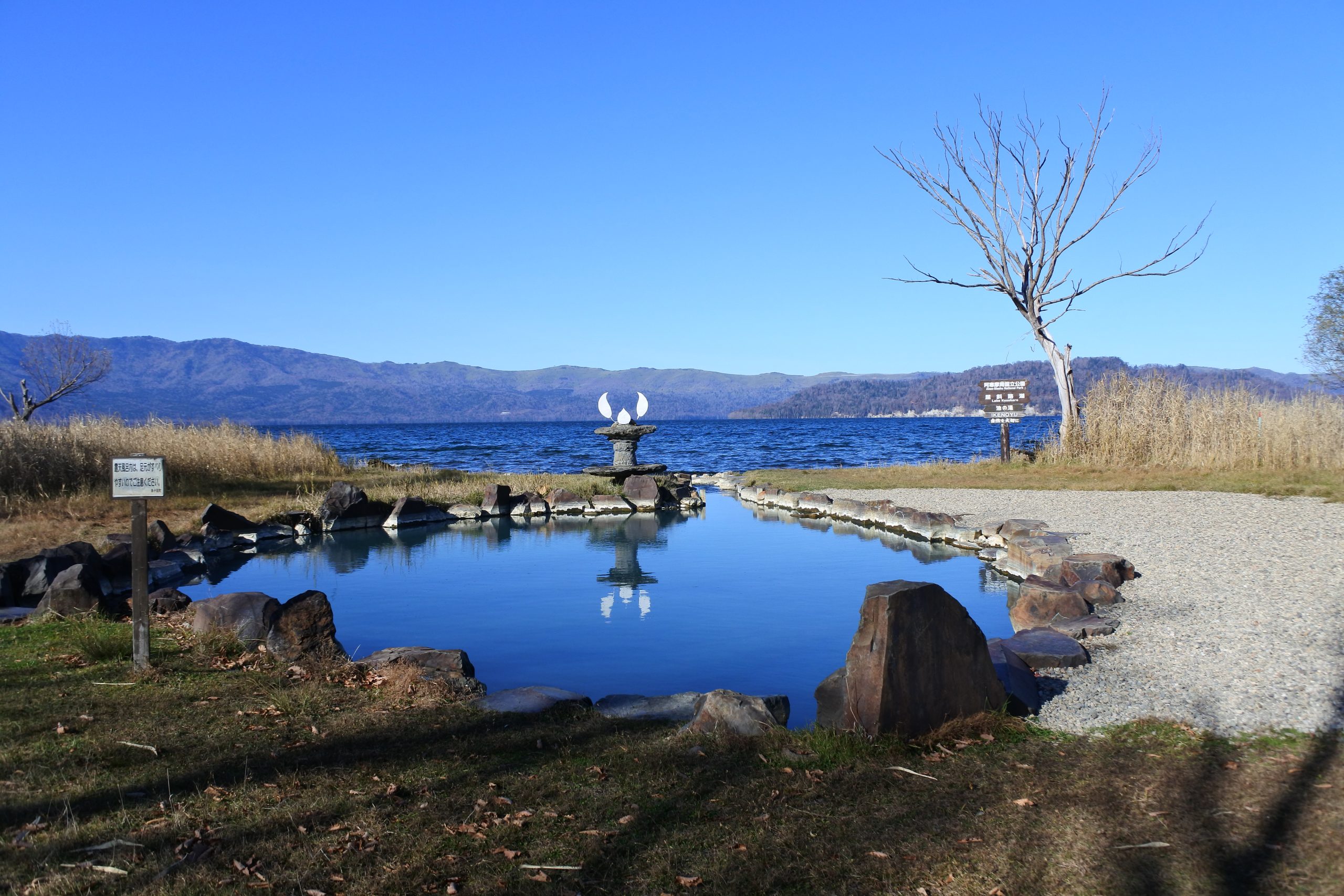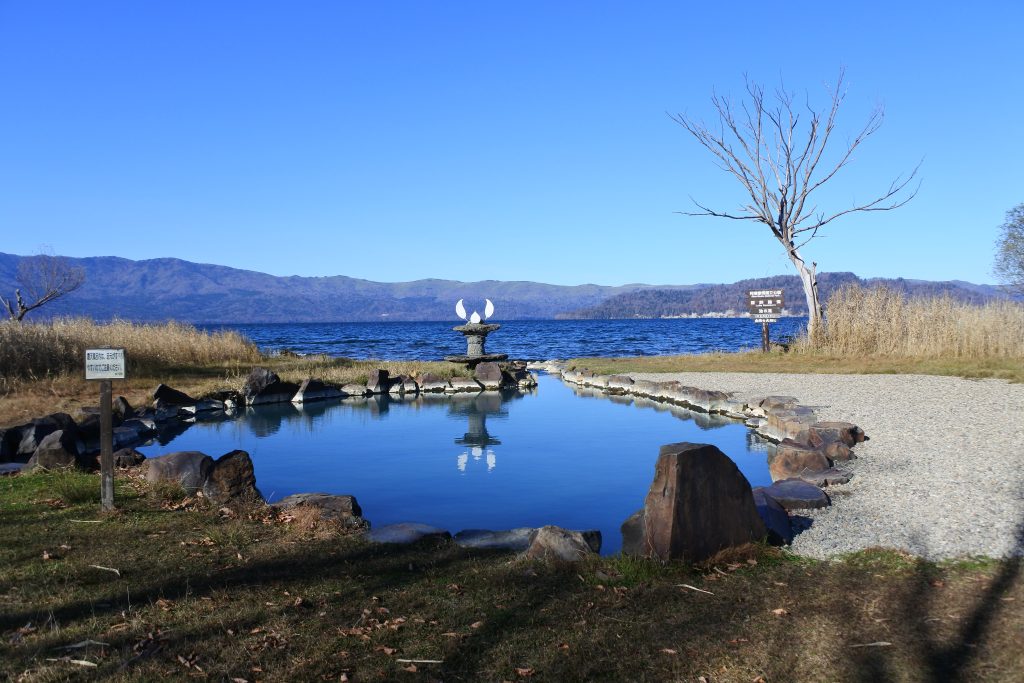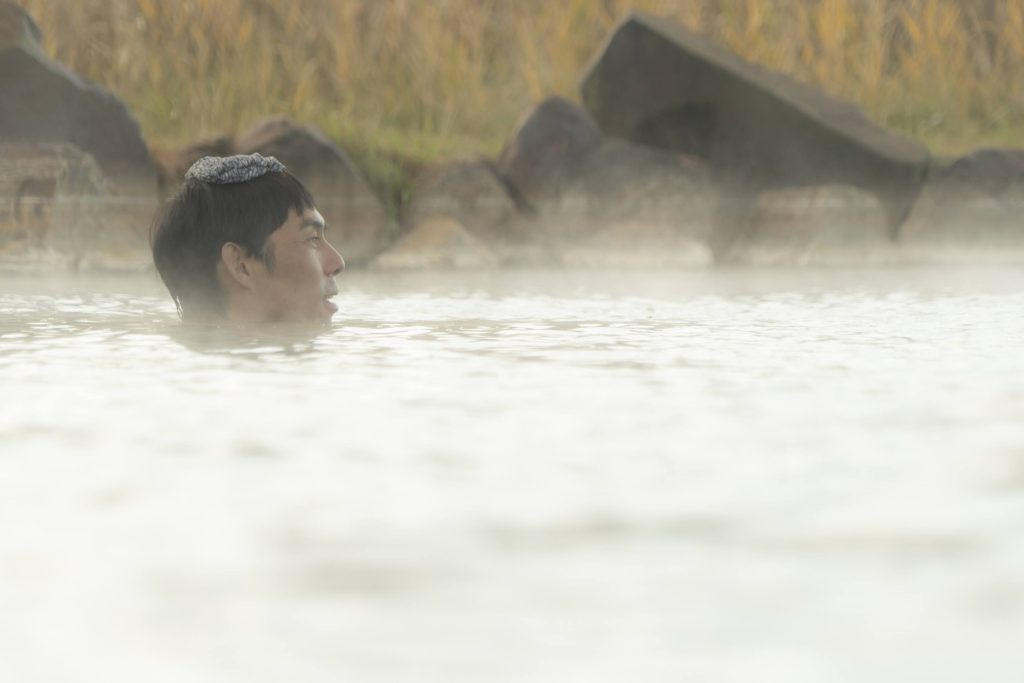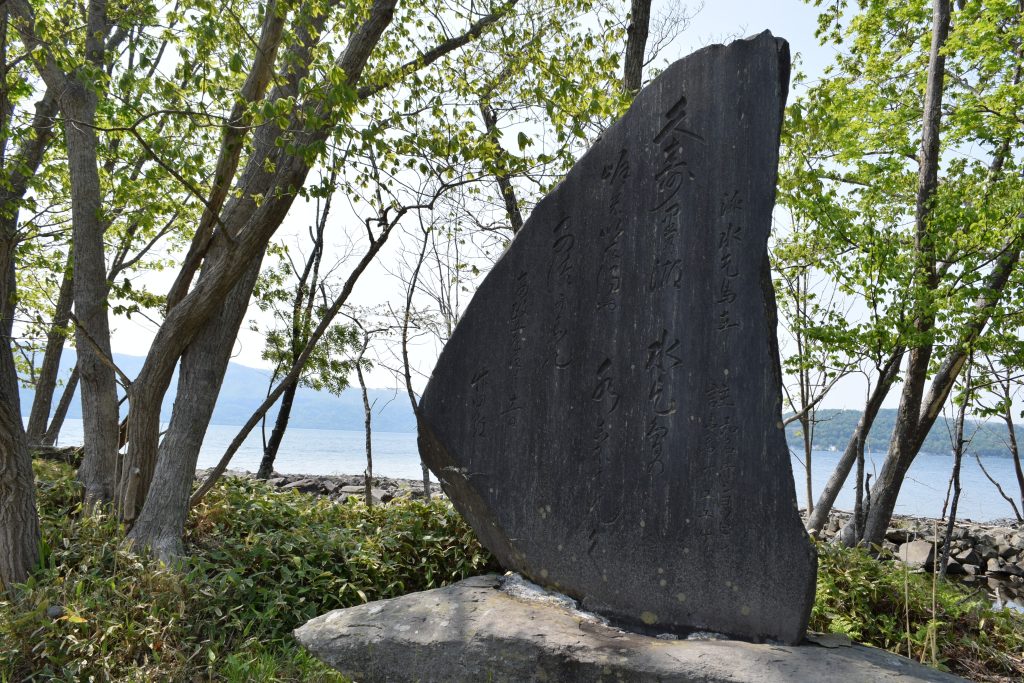
IKENOYU HOTSPRING
Ikenoyu Hot Spring
Warm, mineral-rich groundwater bubbles up to the surface at Ikenoyu on the eastern shore of Lake Kussharo. Ikenoyu has long been popular for its therapeutic properties, helpful for many different health conditions including easing muscle pain and healing cuts and bruises. For centuries the spring played an essential role in the daily lives of local Ainu who lived beside the lake, and also drew Ainu from beyond the Kussharo Caldera, from as far away as Abashiri, Bihoro, and Kitami, to bathe in its waters. This natural warm pool offers panoramic views of the lake, Nakajima (“central island”), and the western mountains of the Kussharo Caldera.

Ikenoyu in Ainu life
Ikenoyu has long been used for bathing, but it was also used in the past in the preparation of cloth. Ainu traditionally softened the bark of Manchurian elm or Japanese linden to make bast-fiber thread for weaving. Bark was first stripped from trees, soaked in the spring, then dried and bleached in the sun to facilitate the removal of the bast fibers. Compared with cold-water soaking, the warm temperature and rich mineral content of the water expedited the bark-softening process and provided natural antimicrobial protection and insect deterrence. The fibers were then dried, separated, and twisted before being used to weave tunics. These traditional Ainu garments were decorated with applique and embroidery.
Taking a dip
Ikenoyu is one of several natural open-air hot springs along the Mashu Kussharo Trail (MKT). The public spring isfree and open 24 hours a day. Simple changing huts are located beside the bath. Bathing is mixed-gender, and swimwear is optional. Bathers may enjoy seeing the sun set as it dips behind the mountains on the opposite side of the lake. The hot spring is connected to the lake and may contain nutrient-rich algae depending on the time of year.

Remembering a great explorer
Near the hot spring, a stone monument commemorates the visit of Matsuura Takeshiro (1818–1888) to Lake Kussharo in 1858. Matsuura, an accomplished explorer, cartographer, and travel writer, visited Hokkaido six times. He published maps and travelogues documenting the topography, the flora and fauna, as well as the customs of the local Ainu. The monument is carved with a tanka poem he composed, describing the hot spring and the view of the lake.
